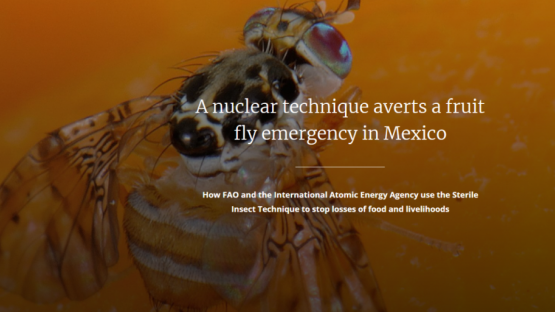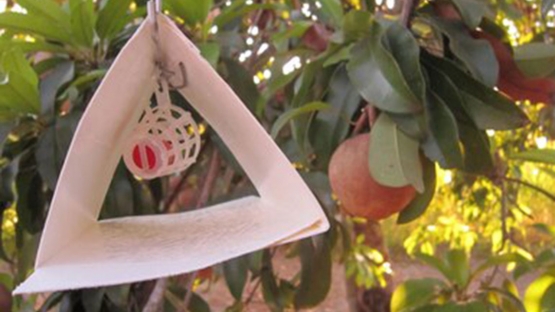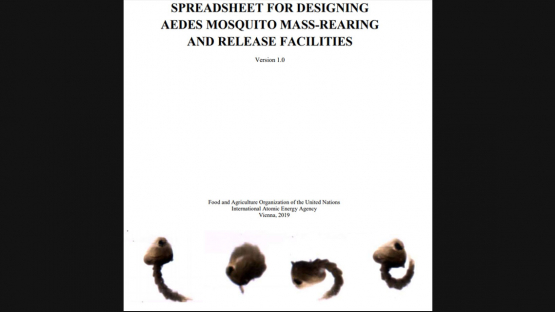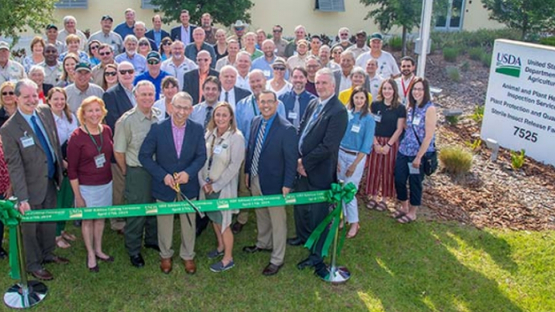IPC highlights

A Nuclear Technique Averts a Fruit Fly Emergency in Mexico
How the Food and Agriculture Organization of the United Nations (FAO) and the International Atomic Energy Agency (IAEA) use the Sterile Insect Technique to stop losses of food and livelihoods.

E-learning Course on Fruit Sampling for Area-Wide Fruit Fly Programmes
The e-learning course is based on the guideline “Fruit Sampling for Area-Wide Fruit Fly Programmes” It is aimed at providing applied to detect the presence or absence of the target fruit fly species in an area.

General Guidelines to Facilitate the Opening of International Markets for Fruits and Vegetables that are Fruit Fly Hosts based on International Standards for Phytosanitary Measures
The purpose of the guide is to elaborate on the use of international standards to facilitate international trade of fresh fruit and vegetables known to be fruit fly hosts considering the regulatory framework that is defined by the World Trade Organization (WTO) Agreement on the Application of Sanitary and Phytosanitary Measures (the SPS Agreement) and the International Plant Protection Convention (IPPC) with its associated International Standards for Phytosanitary Measures (ISPMs). Available also in Spanish.

Sterile Insect Technique: Helping Establish Pest Free Area in Argentina and Facilitating Trading Path for Exporting Fruit
The National Fruit Fly Control and Eradication Programme (PROCEM) in Argentina, adding SIT within its national pest management programme directly contributed to several SDGs, in particular SDG 1, 2, 3, 5 and 10, though the projects were initiated in 1990s.

On the Frontier of Science for Food and Agriculture
Nuclear weapon tests offer valuable insight into how to measure soil erosion and enable the restoration of healthy soils we need to grow our food.

FAO and IAEA Deepen and Broaden Their Collaboration
The Director-Generals of the Food and Agriculture Organization (FAO), QU Dongyu, and the International Atomic Energy Agency (IAEA), Rafael Mariano Grossi, signed an updated collaboration arrangement, aimed at further strengthening and developing their joint activities.

The American Congress on Fruit Flies: 10th Meeting of the Tephritid Workers from Western Hemisphere
From 2 to 6 November 2020 the American Congress on fruit flies organized the 10th meeting of the Tephritid Workers of Western Hemisphere (TWWH), a five day virtual conference dedicated to the International Year of Plant Health (IYPH) 2020.

The Sterile Insect Technique for Use Against the Devastating European Grapevine Moth in Chile
The European grapevine moth, or Lobesia botrana (Lepidoptera: Tortricidae), is an insect pest that develops on more than 200 plant species of various families. It is one of the most serious vineyard pests in the Mediterranean region and southern Europe.

The Mediterranean fruit fly outbreak in Manzanillo, Colima, Mexico, Has Been Officially Declared Eradicated
An outbreak of the Mediterranean fruit fly (Ceratitis capitata, Wied.) was declared eradicated on 24 April 2020 after one year of intensive actions carried out under the framework of an emergency response protocol.

And the African Union Commission Excellence Award Goes to…
Marc Vreysen and Udo Feldmann from the Joint FAO/IAEA Division of Nuclear Techniques in Food and Agriculture recently received recognition by the African Union - InterAfrican Bureau for Animal Resources (AU-IBAR) for their unwavering commitment and outstanding contributions to the control of the tsetse flies in Africa using the sterile insect technique (SIT).

Fruit Sampling Guidelines for Area-Wide Fruit Fly Programmes
Fruit sampling in Area-Wide Fruit Fly Integrated Pest Management (AW-IPM) programmes, is applied to detect the presence or absence of the target fruit fly species in an area. It is also applied to monitor immature stages of the pest to determine those fruits that are hosts as well as fruit fly spatial and temporal distribution and abundance.

Use of Entomopathogenic Fungi for Fruit Fly Control in Area-Wide SIT Programmes
Entomopathogenic fungi have been reported as effective natural enemies of insect pest. In fruit flies there is empirical evidence that some common fungal species are efficient biological control agents. The purpose of this publication is to serve as a guide for the implementation of microbial control through the use of fruit flies as vectors of fungus conidia. This document is also available in Spanish.

E-Learning Course on Packing, Shipping, Holding and Release of Sterile Flies in Area-Wide Fruit Fly Control Programmes
Based on the FAO/IAEA guidelines, this e-learning course introduces and explains the principles of packing, shipping, holding and release of sterile flies in area-wide fruit fly management programmes.

Meeting of the International Plant Protection Convention (IPPC) Technical Panel on Phytosanitary Treatments (TPPT)
Phytosanitary treatments (PTs) are essential for controlling regulated pests in articles and goods, especially those that are regulated for trade on an international scale. The IPPC PTs are an alternative to methyl bromide and help protect biodiversity.

Guide for Establishing and Maintaining Pest Free Areas
This guide is aimed at providing guidance on the establishment and maintenance of pest free areas (PFA), pest free places of production (PFPPs), pest free production sites (PFPSs) and areas of low pest prevalence (ALPPs) as phytosanitary measures to facilitate safe trade and improve the phytosanitary status of a country.

Spreadsheet for Designing Aedes Mosquito Mass-Rearing and Release Facilities Version 1.0
The FAO/IAEA Interactive Spreadsheet is intended to be used for the design of insect mass-rearing facilities for Aedes mosquito.

New Sterile Insect Release Facility in Sarasota, Florida. The Facility Supports the USDA, APHIS Mediterranean Fruit Fly (Medfly) Preventive Release Program
APHIS’ Plant Protection and Quarantine (PPQ) program marked the opening of its newest Sterile Insect Release Facility in Sarasota, Florida.

Exploring Genetic, Molecular, Mechanical and Behavioural Methods of Sex Separation in Mosquitoes
Major human diseases such as malaria, dengue, chikungunya, Zika and yellow fever are transmitted by mosquito species which are members of the Aedes and Anopheles genera.

Developing Area-Wide SIT Against the European Grape Vine Moth (Lobesia Botrana) in Chile
The grapevine moth or Lobesia botrana (Lepidoptera, Tortricidae) was detected for the first time in Chile in the Linderos area of the Metropolitan Region in April 2008.

Another Great Achievement: the Reorganized Suite of Fruit Fly Standards are Now Available in English on the IPP
ISPMs 26, 30, 35 and 37 have successfully been reorganized to reflect the decisions of CPM-13 (2018). This reorganization made the suite of fruit fly standards more logical and simple, which will help in their implementation and facilitate safe trade.
- 1 of 2
- next ›

